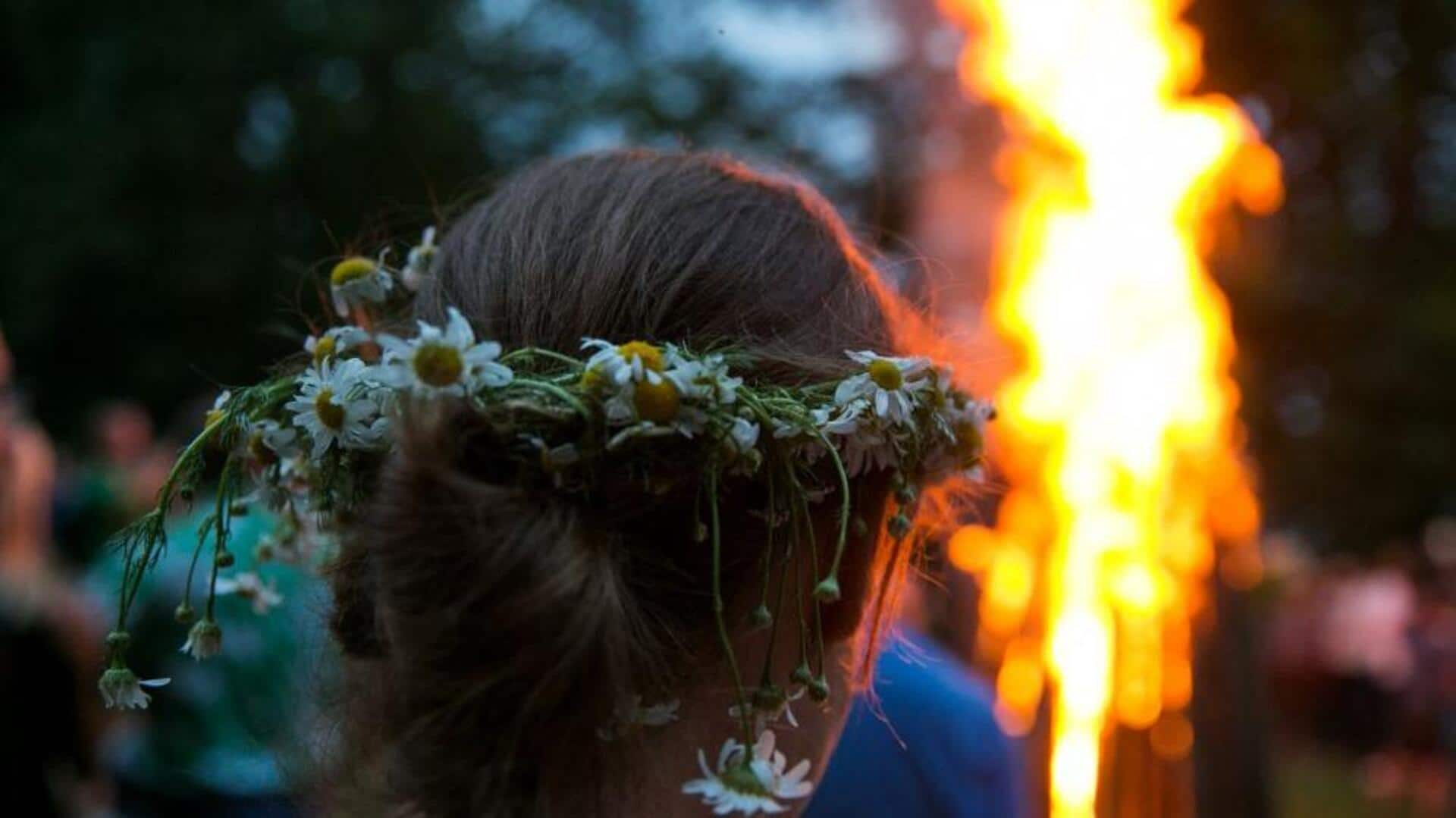
5 fascinating Lithuanian traditions you didn't know
What's the story
Lithuania is a beautiful country with a rich history and culture. In fact, Lithuania has some unique traditions which are best explored in summer. From ancient rituals to colorful festivals, these customs give a glimpse of the country's heritage and way of living. Whether you are planning to visit or are just curious about the cultures of different countries, knowing about these Lithuanian traditions is fun.
Midsummer celebration
Jonines: The Midsummer Festival
Known as Rasos or St. John's Day, Jonines is one of Lithuania's most celebrated festivals. On June 23, it marks the summer solstice with bonfires, singing, and dancing. People often wear flower crowns and look for the mythical fern blossom believed to bring good fortune. This deeply pagan festival gives a glimpse of Lithuania's ancient past.
Winter farewell
Uzgavenes: Farewell to winter
Uzgavenes is a lively pre-Lenten festival that takes place in February or March. It bids adieu to winter and welcomes spring. Colorful costumes, masks, and traditional music mark the event as people parade through towns. Pancakes, representing the sun's return, are popularly savored. The highlight is burning an effigy named More, representing the end of winter.
Traditional fair
Kaziuko Muge: St. Casimir's Fair
Kaziuko Muge is an annual fair that takes place in early March in Vilnius to commemorate Lithuania's patron saint St. Casimir. The event features local crafts including pottery and textiles as well as traditional foods such as rye bread and honey products from all over Lithuania. It makes for an excellent souvenir shopping opportunity while immersing in authentic Lithuanian culture.
Palm Sunday custom
Verbu Sekmadienis: Palm Sunday tradition
Verbu Sekmadienis is celebrated on Palm Sunday. Lithuanians prepare elaborate palm bouquets with dried flowers instead of palm leaves as they are not easily available. Willow branches, catkins, boxwood, juniper, etc., are easily accessible materials. These bouquets are then blessed at church services. Later, they are placed in homes for the Holy Week. They signify renewal, hope, and prosperity for the coming year ahead.
Harvest festival
Zolines: Assumption Day celebrations
Zolines, celebrated August 15, coincides with the Assumption Day. It intertwines Christian elements with harvest festival traditions. People congregate in fields and meadows to gather herbs and flowers. These are then brought to churches for blessing ceremonies. Upon being blessed, they're used to adorn homes. It's believed to shield against negative influences and ensure bountiful harvests in the following season.